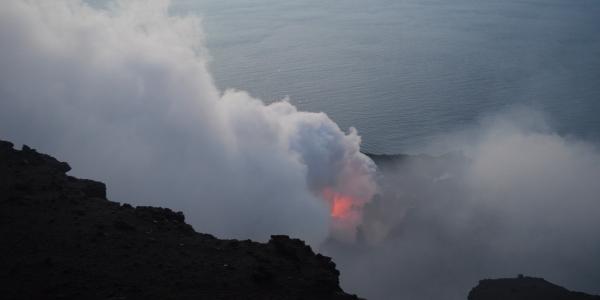EEPS Colloquium: Jaime Barnes
The role of the forearc in fluid-mobile elemental cycling through subduction zones
Lithium, boron, and the halogens (Cl, F, Br, I) are all highly fluid-mobile elements. Their incompatibility in minerals limits modification by fluid-rock interaction, thereby making them reliable tracers of fluid source. Due to their hydrophilic nature, elemental ratios (e.g., Cl/Nb, Br/Cl, I/Cl, Li/B, B/Cl) as well as the isotopes of Li, B, and Cl have been used as a fluid tracer in subduction zones or to trace recycled crustal material in the upper mantle. Recent work has focused on defining the elemental concentration and isotopic composition of inputs (e.g., sediments, altered oceanic crust, serpentinites) into the subduction zone, as well as, outputs from the volcanic front (e.g., gases, lava, melt inclusions). Although the cycling of Li, B, and halogens through the arc volcanic front is now reasonably well understood, their overall budgets remain uncertain because additional output pathways are likely but to date have been poorly quantified. Four possible, yet largely unquantified outputs/reservoirs are: 1) loss through or sequestration in the forearc via cold and thermal spring systems; 2) sequestration in the crust due to magma ponding; 3) deeply subducted residue and input into the deep mantle, and 4) sequestration in the sub-continental lithospheric mantle. Here I will present work on water samples from 44 different cold and thermal (> 40°C) springs on a transect across the outer forearc (~20-40 km to the subducting slab), forearc (~40-80 km to the slab), and arc (~80-120 km to the slab) in Costa Rica to address volatile recycling through the forearc and potential changes in fluid source from the dehydrating subducting slab. Stable isotope and trace element geochemistry shows distinct changes across the transect consistent with a sedimentary pore fluid source in the outer forearc, sediment and altered oceanic crust dehydration in the forearc, and a mantle-like signature near the arc. Mass balance calculations show that fluid emission via springs in global forearc regions are a significant output for the fluids and for some of the fluid mobile elements from convergent margins.
Host: Mike Krawczynski
EEPS Colloquia are made possible by the William C. Ferguson Fund.

